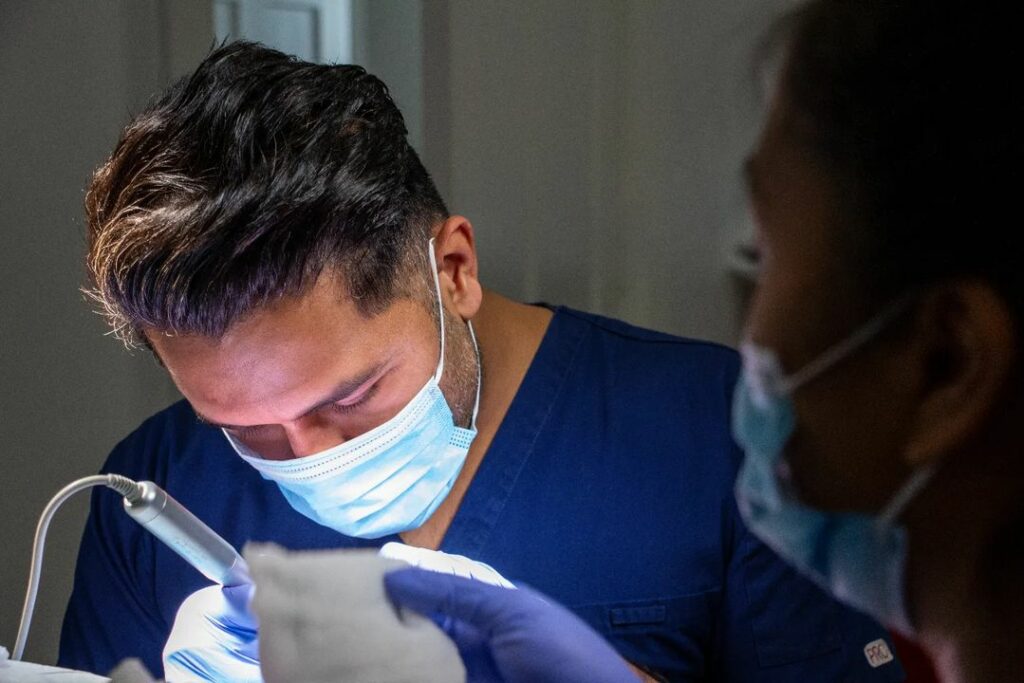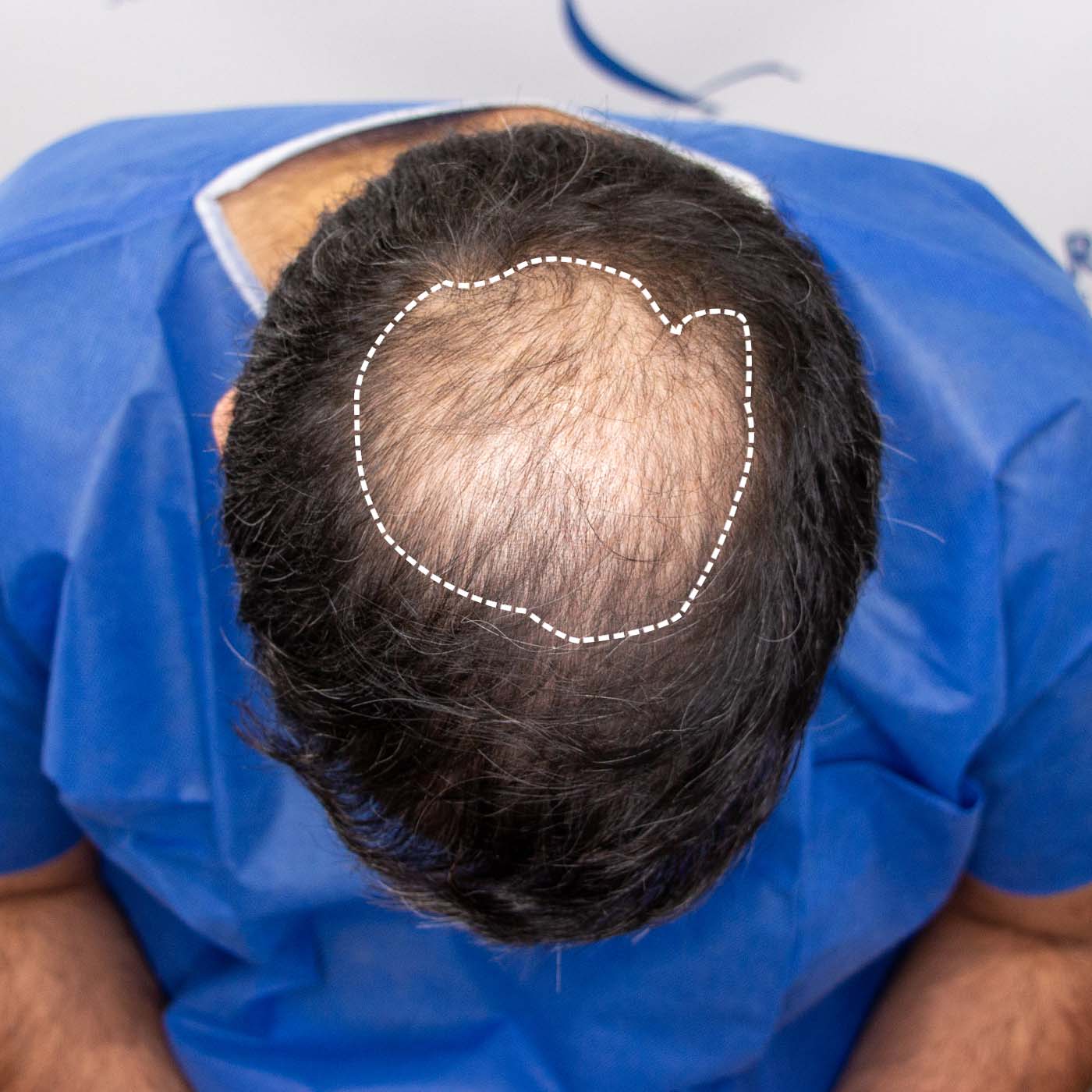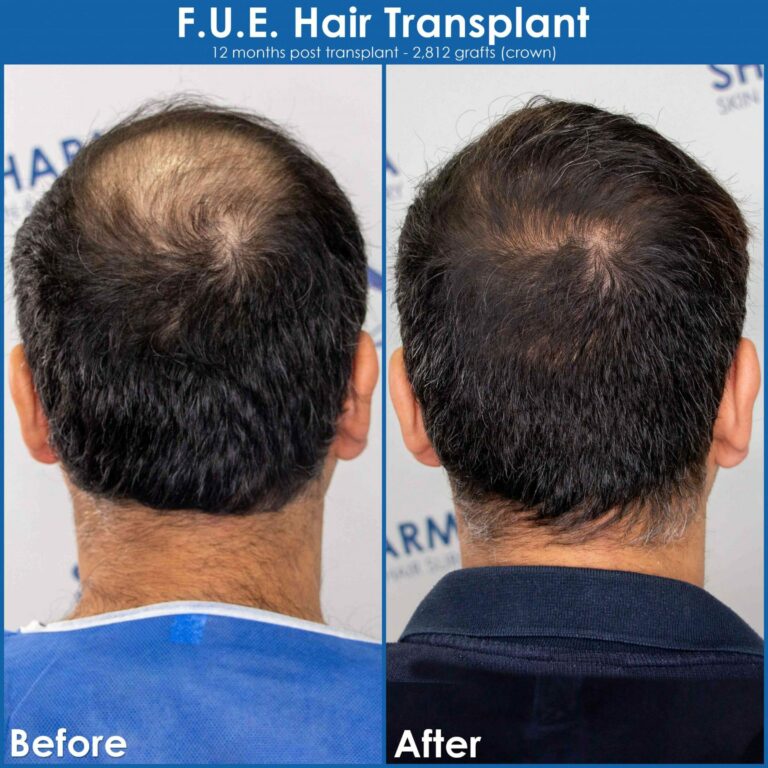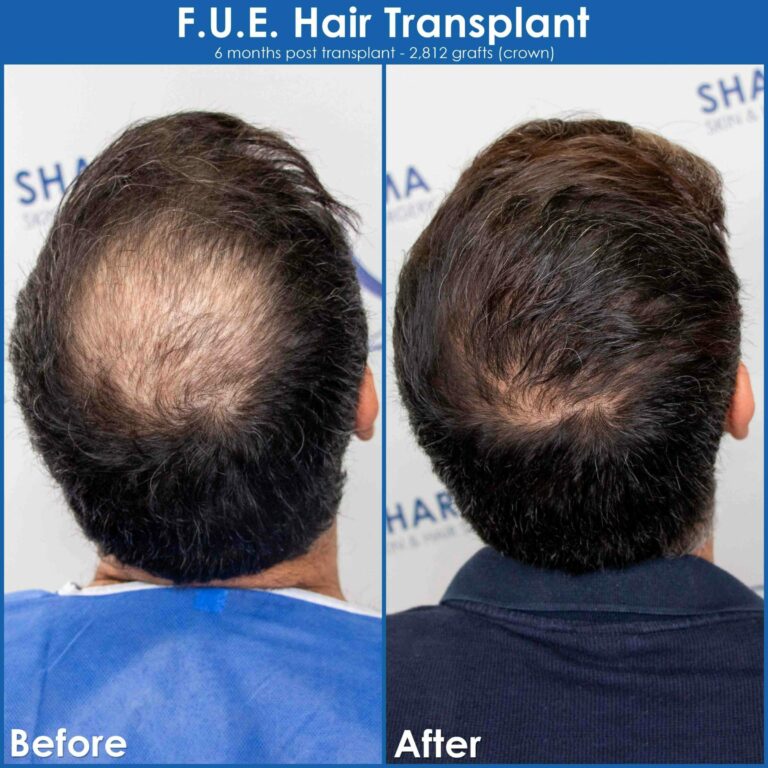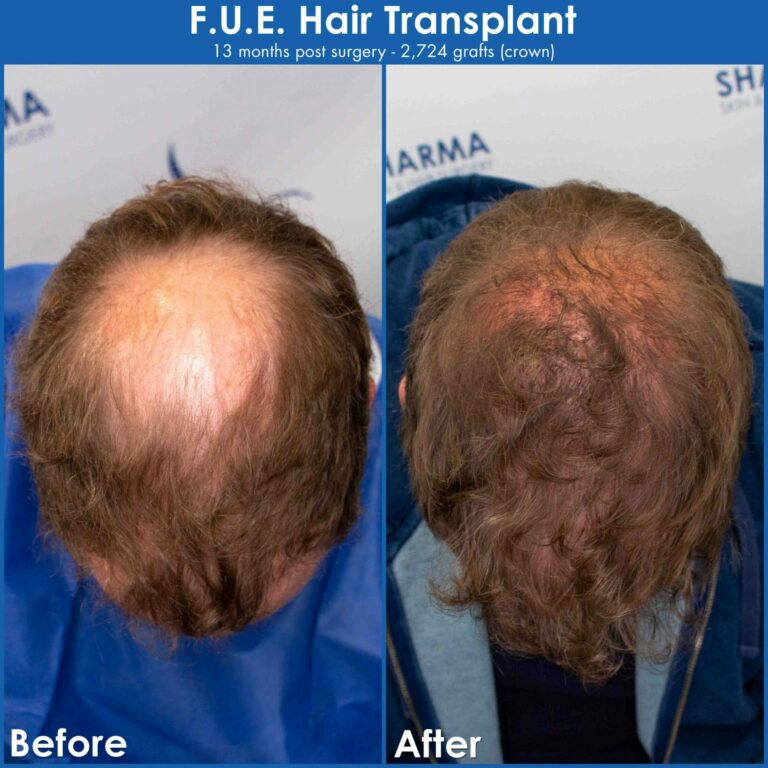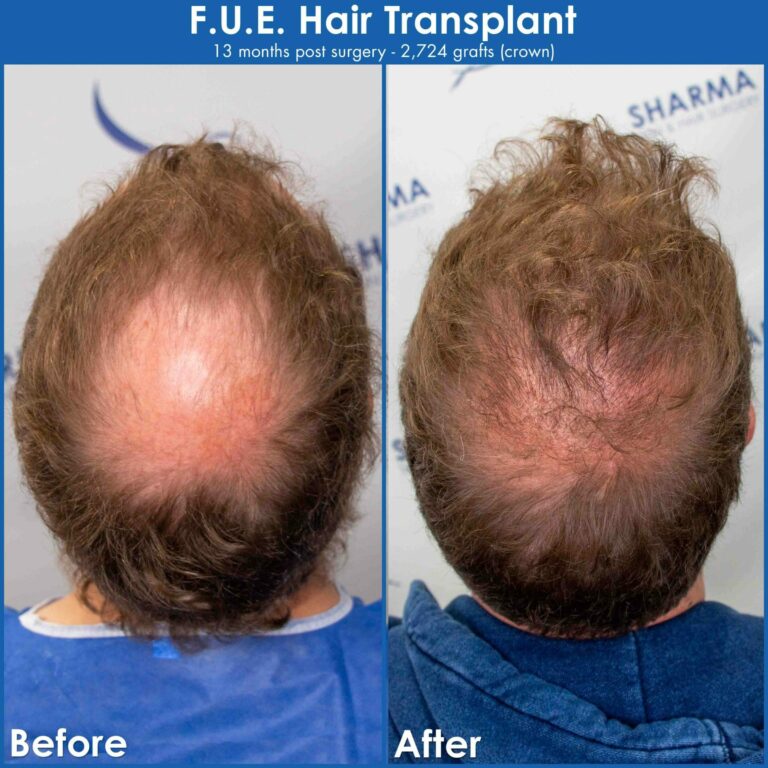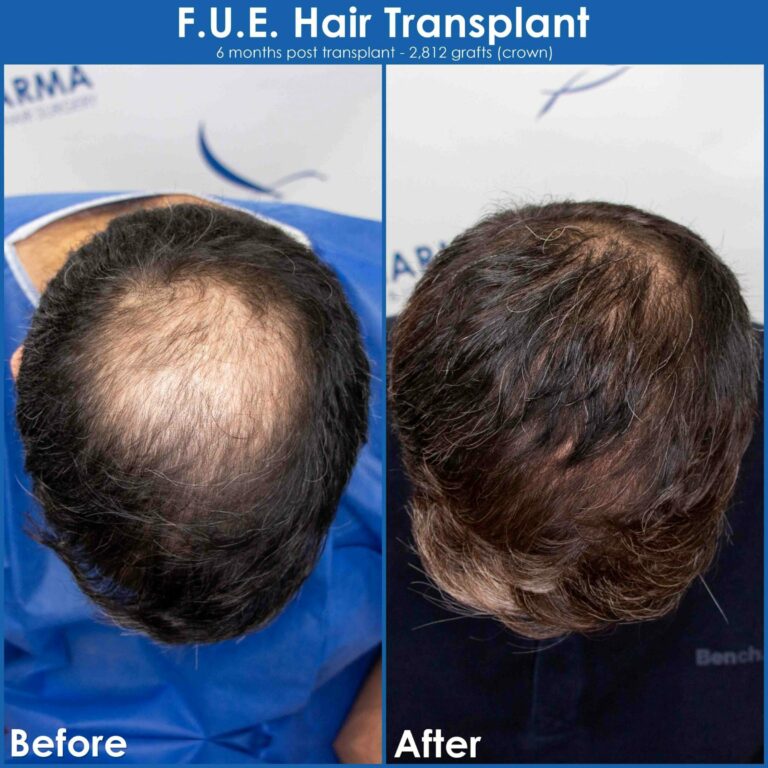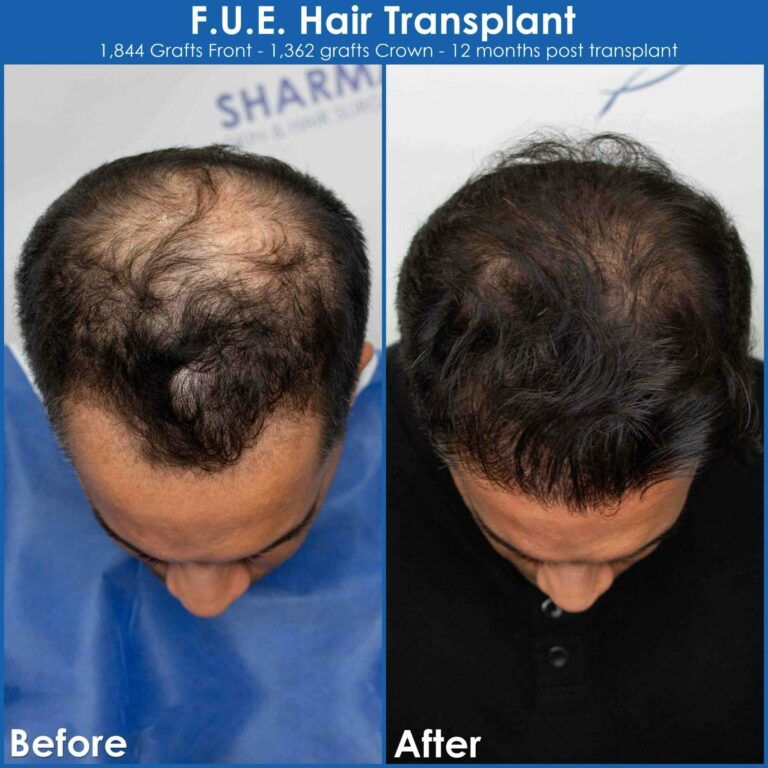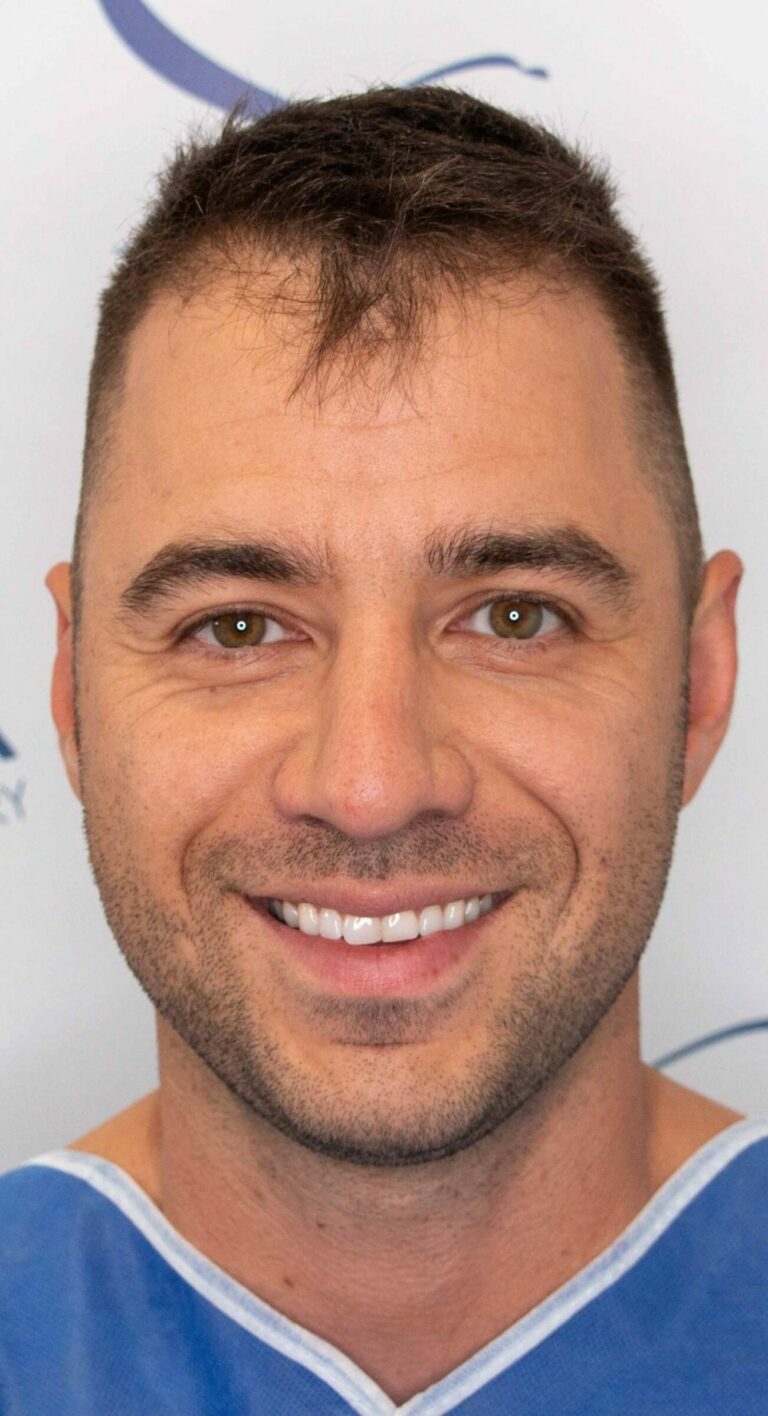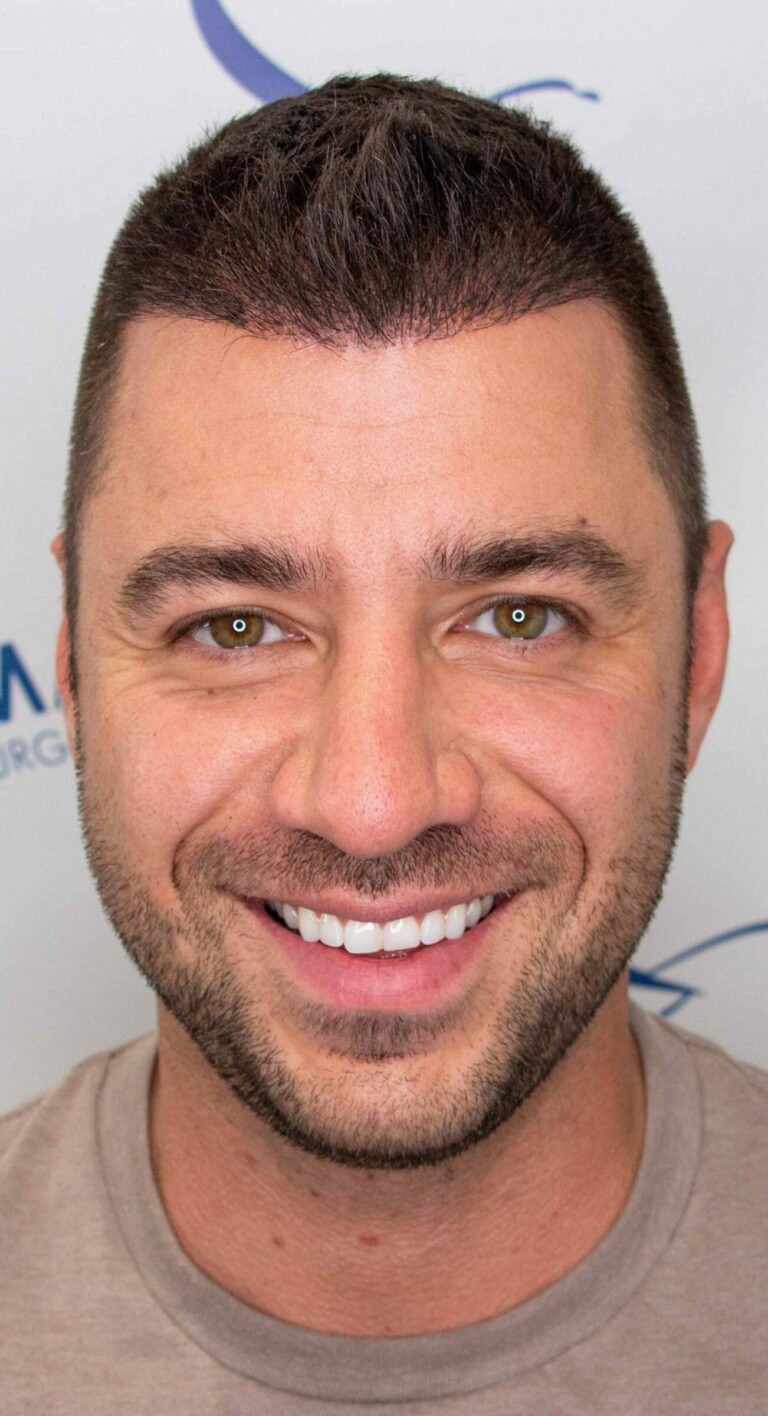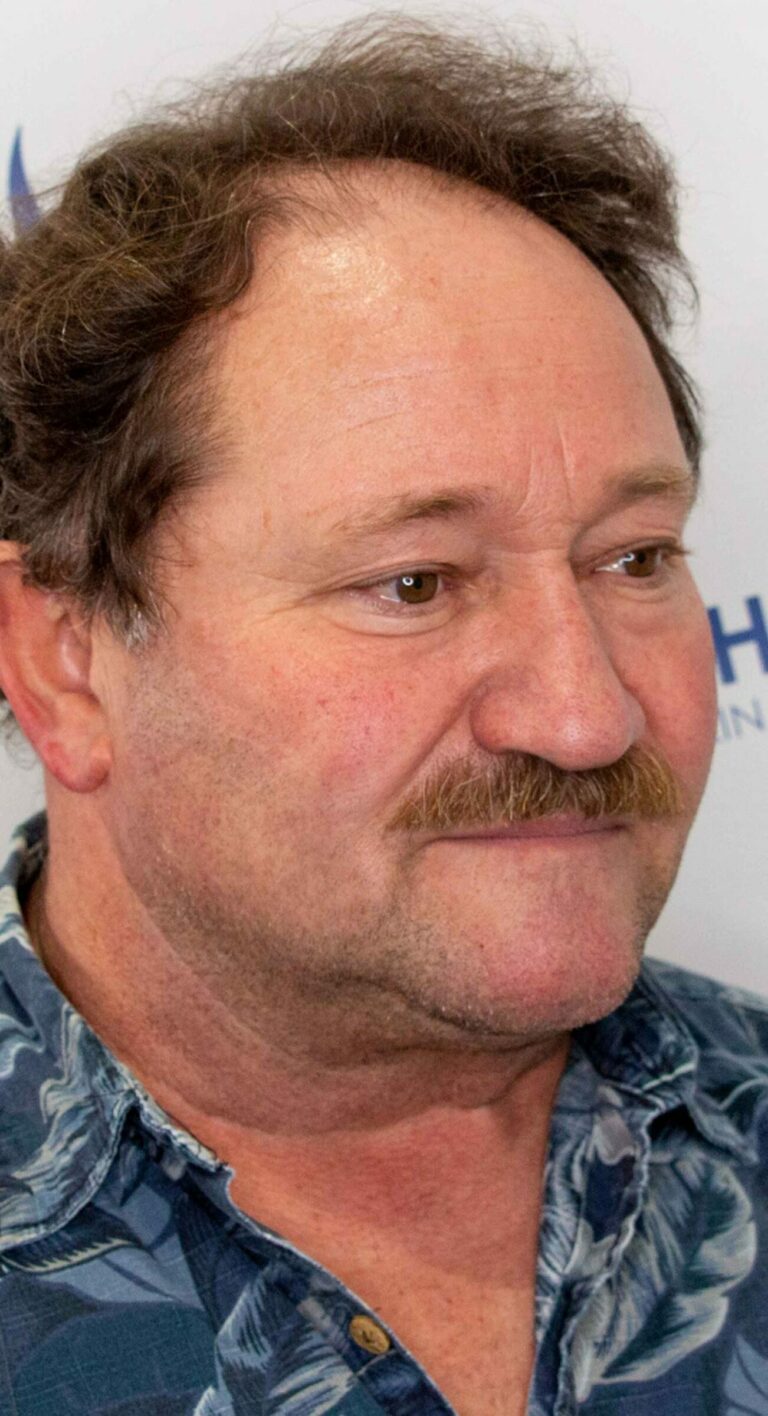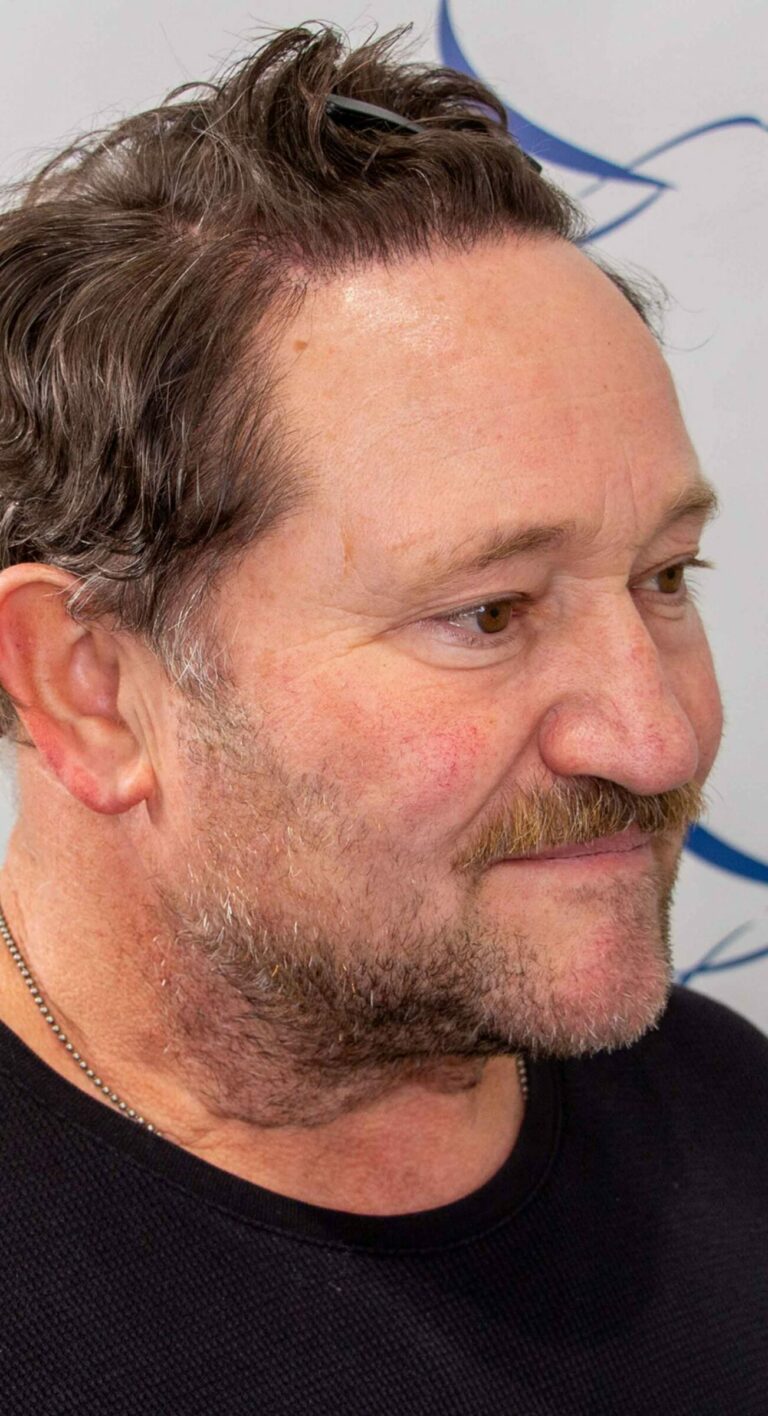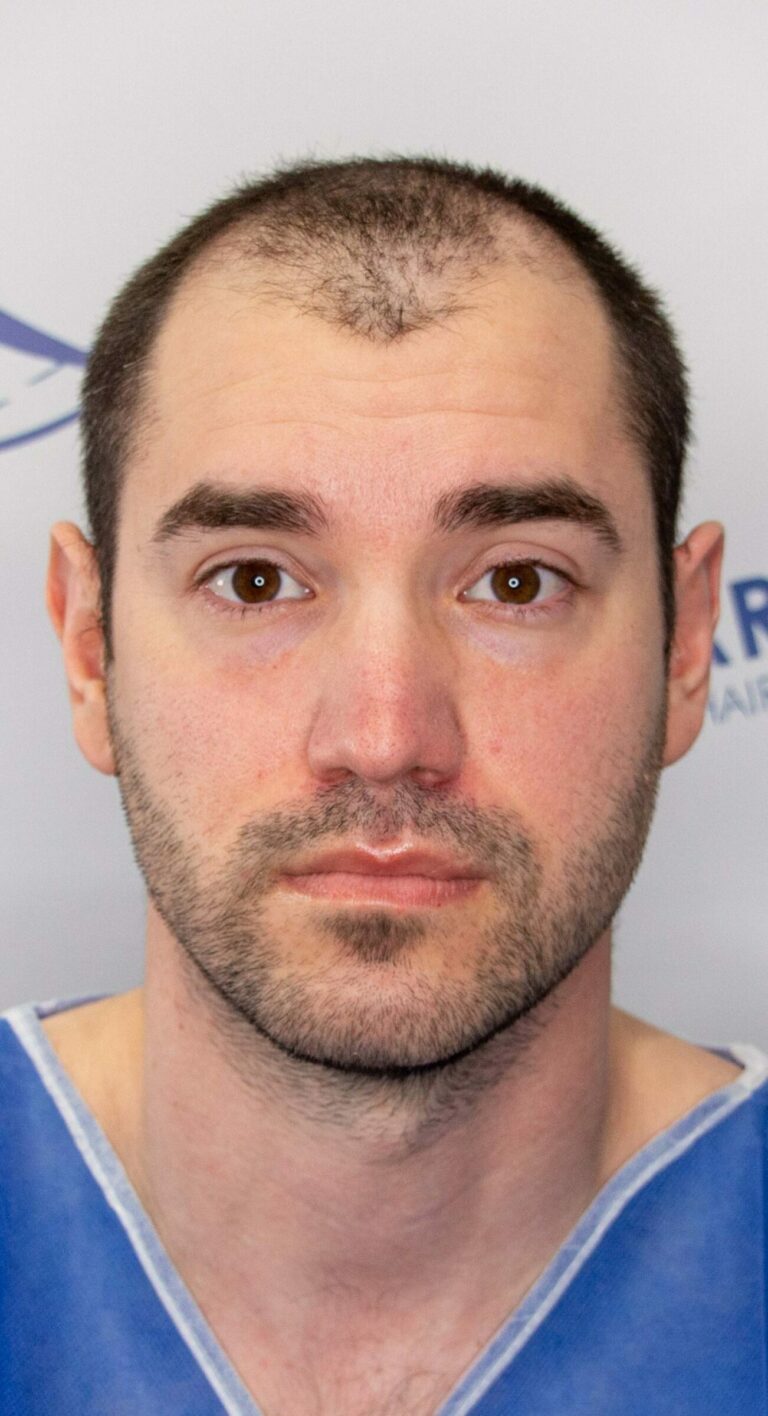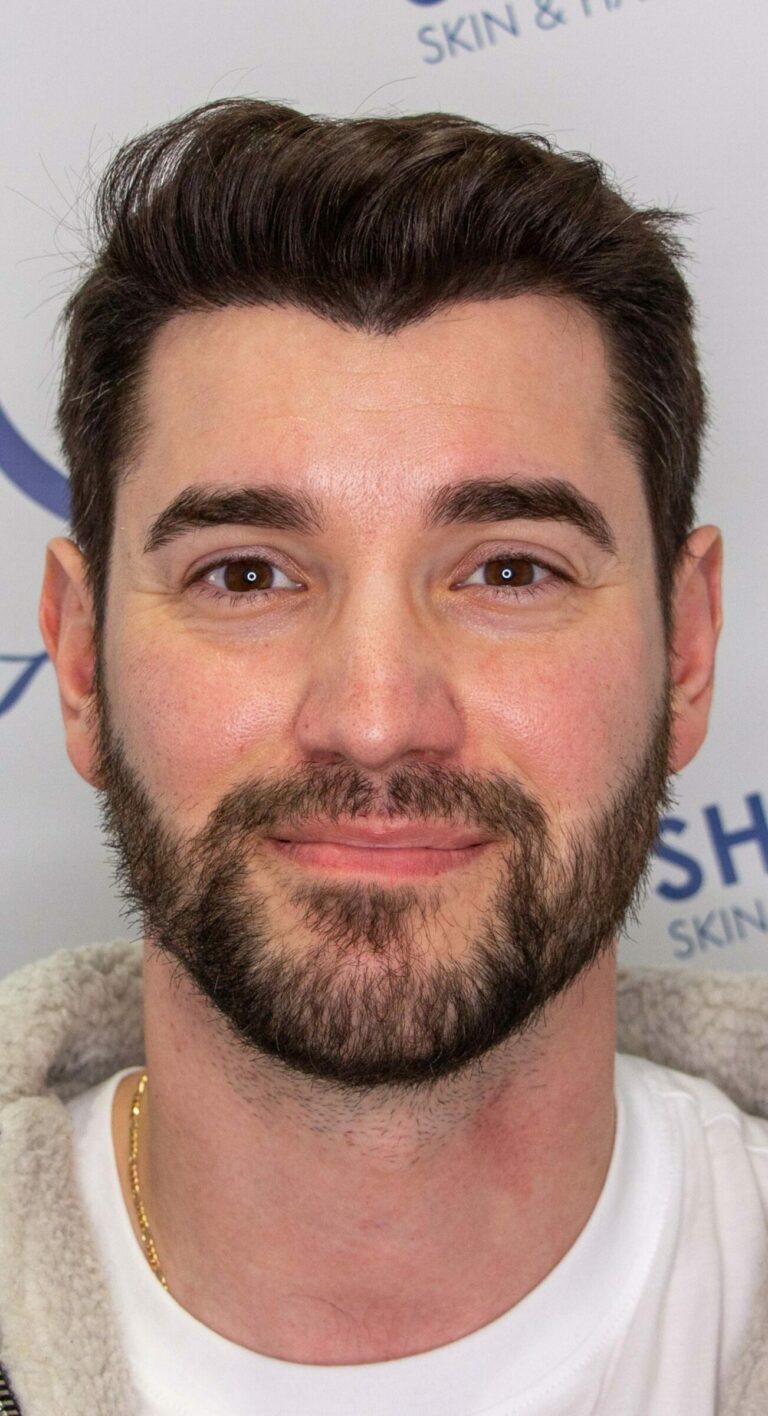Where exactly is the crown?
The crown is located at the very top of your skull and is the topmost part of the head. The origin of the word is an indirect translation of wreath and head from the Latin phrase ‘Corona Capitis‘.
Sometimes referred to as the vertex this area is the second most prevalent area Dr. Sharma treats for hair loss. This area of hair loss can be anywhere from a small quarter sized visible gap in the hair to a large generalized thinning which slowly spreads outwards from the center.
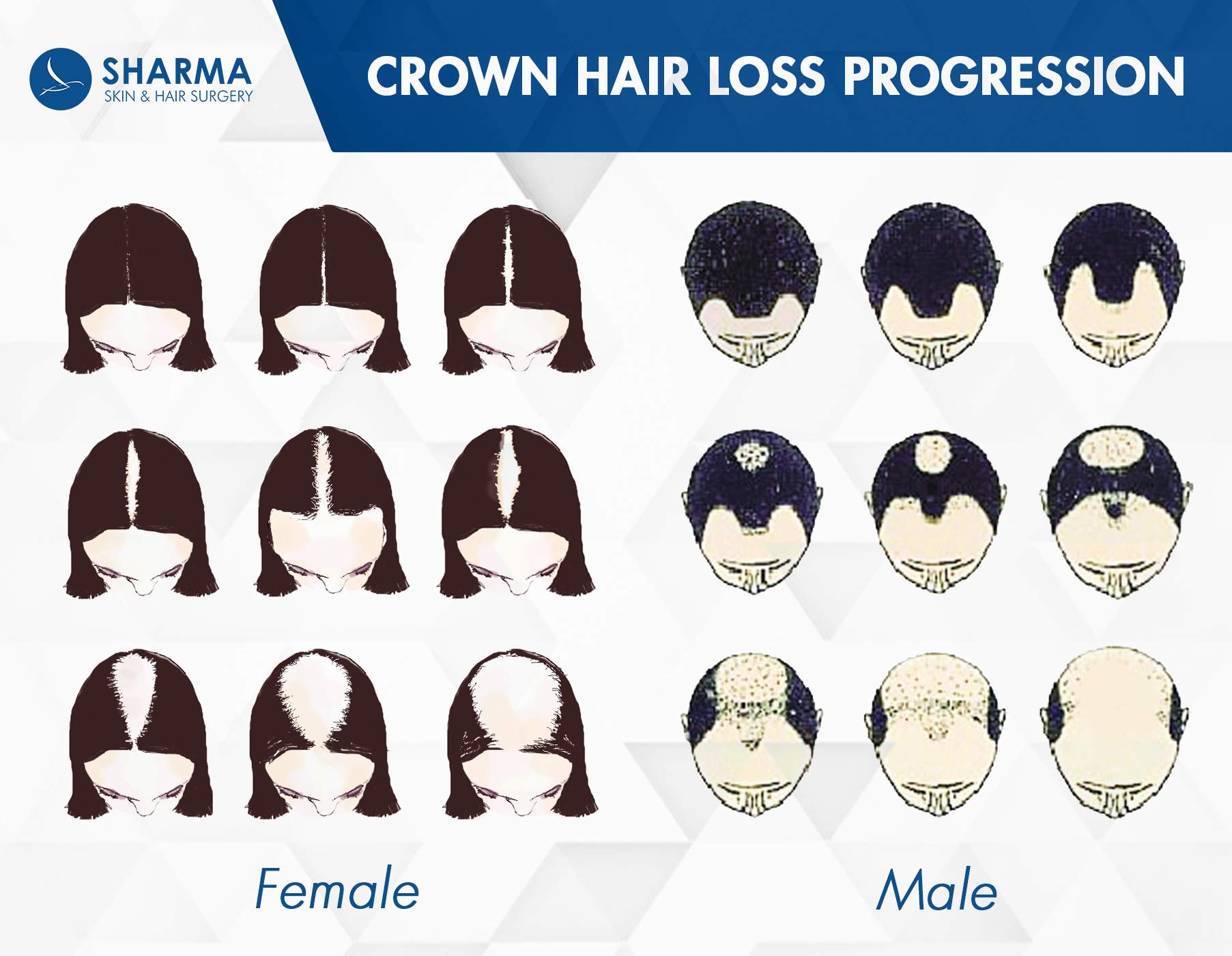
Restoration & stabilization
The massive change a full head of hair can have
Many of our patients report using all sorts of technologies and products to prevent anyone from knowing about hair loss and it clearly affects how they feel about themselves. Luckily, with proper treatment (ideally completed sooner than later), we can almost completely fill in the crown with a moderate amount of grafts in a single hair transplant session. When left for too long, your options become more limited. Treating a very large area may require multiple sessions – this means more time spent recovering and of course, a higher cost.
Dr. Sharma’ ‘s advice for those who are first noticing hair loss
Stop putting it off, do something now. The best first step is to see a hair loss professional. Even if it’s not visiting us at Sharma Skin & Hair Surgery, speak with your family doctor about it. The earlier you tackle this problem, the more options you will have.
Crown hair transplant recovery
Crown hair transplant recovery time
Recovery following surgery comes with a bit of work. At Sharma Skin & Hair Surgery, we ask patients to follow a very strict post-care routine which involves the use of a custom solution. This solution contains Hypothermosol and Saline and must be applied to the scalp at regular intervals following surgery. The point of this spray is to promote growth and speed up recovery times. The saline is a natural disinfectant which further helps to reduce the chances of infection at the recipient site. The recovery period is a minimum of 5 days. Most patients will return to work on day 8 following surgery.
More on hair transplant recovery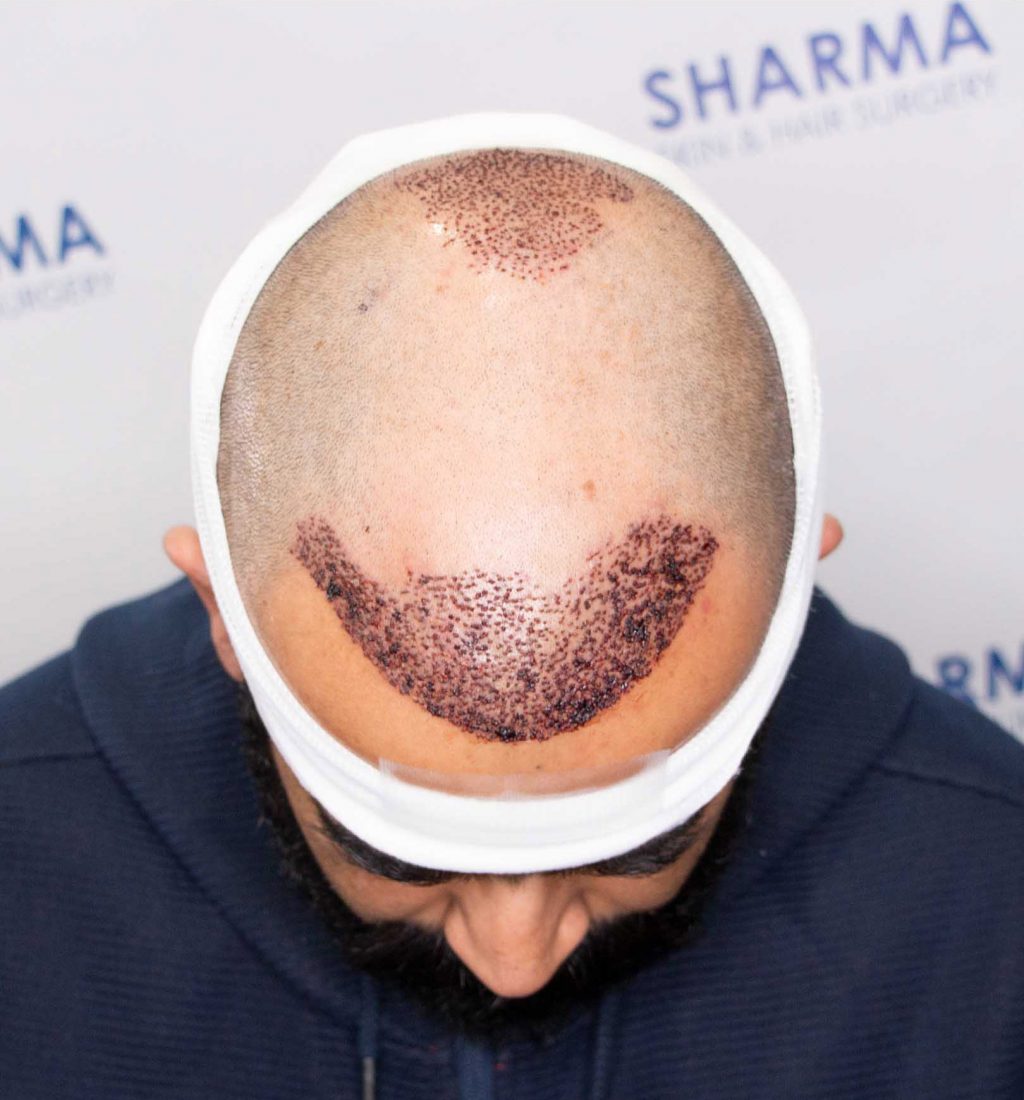
Planning ahead
Long-Term Strategy for Hair Transplants
Not only does Dr. Sharma consider the immediate results of hair transplant, but he also designs a plan that considers how hair loss patterns will affect the long-term appearance. For example, there are times when multiple treatments are needed as the hair continues to recede later in life. The transplanted hair follicles must be placed strategically to ensure a natural appearance in 2, 5, and 10 years.
Every person has is a limited amount of donor hair available. The long-term plan should ensure that adequate donor supply is present if additional treatments are needed in the future.
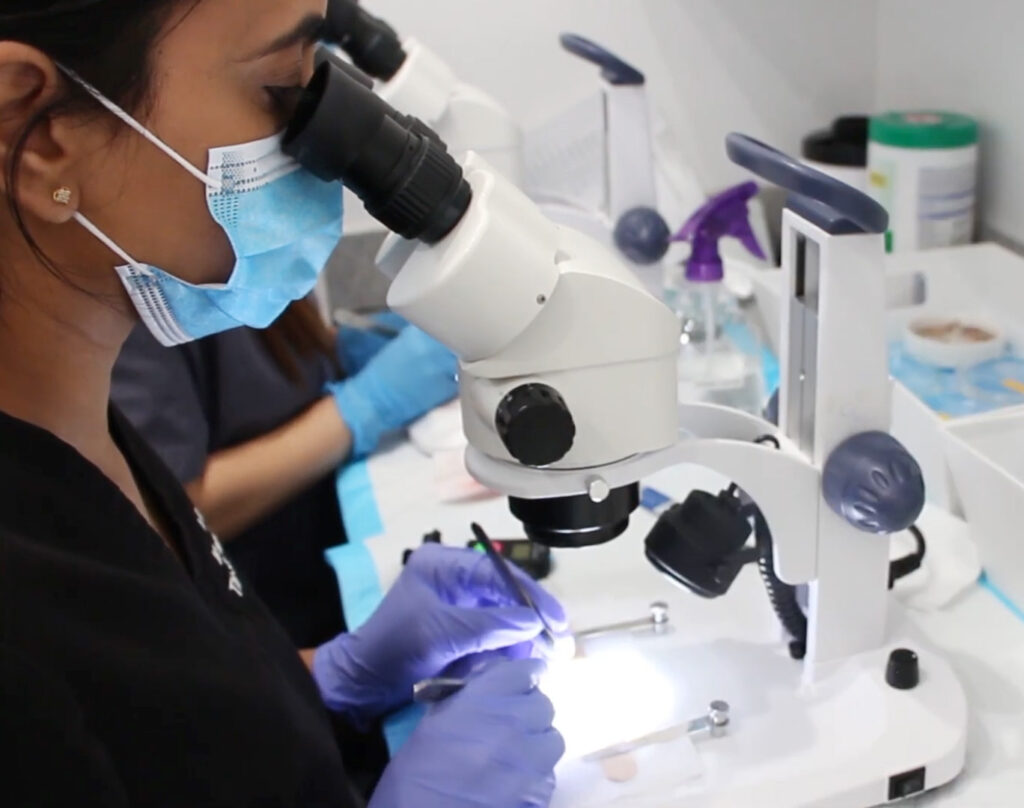
Before & After Photos
Comb Through our Results
Take a moment to review the results of Dr. Sharma’s previous patients. You can browse our Before and After Gallery, or review patient testimonials from other people who chose Dr. Sharma as their Edmonton hair transplant surgeon. All of these results were achieved at our clinic here in Edmonton.
Before & After GalleryGet more information
Knowledge Centre
Hair Transplant Alternatives

We understand that losing your hair can be a confidence killer. Many people feel self-conscious when they notice thinning or receding hair. While a hair…
Hair Transplant Graft Numbers: Why More Isn’t Always Better
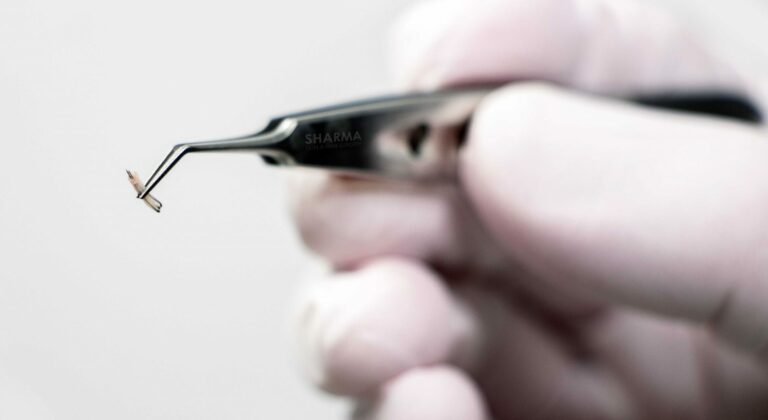
Hair transplantation has become an increasingly popular solution for those seeking to restore their hair. However, the industry has seen a disturbing trend: a focus…
Read article on Hair Transplant Graft Numbers: Why More Isn’t Always Better
DHI Hair Transplants: Separating Fact From Fiction
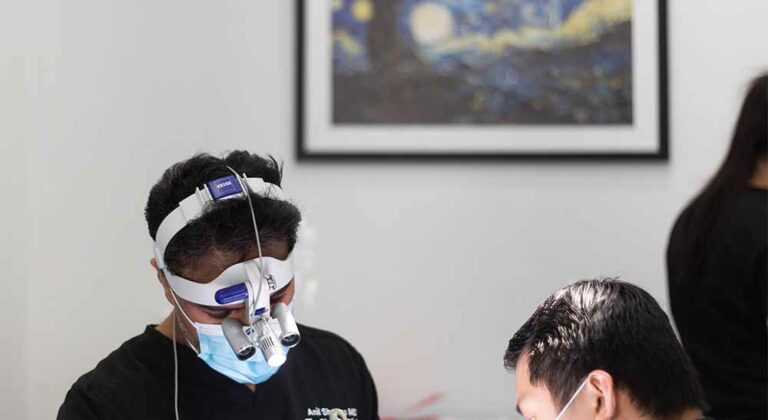
The hair restoration landscape is constantly evolving, with new techniques and technologies emerging regularly. One term that has gained significant popularity in recent years is…
Read article on DHI Hair Transplants: Separating Fact From Fiction
Hair Transplants FAQ
We’ve compiled a list of some of the most common questions asked during our initial consultation
The cost of a hair transplant depends on the procedure type and the number of grafts transplanted. Dr. Sharma performs the procedures manually in order to ensure the most natural look possible. Hair transplant procedures generally start at $6,000.
Even though hair loss is an unavoidable experience for many people, it is possible to turn back the clock so you can regain a youthful appearance. Dr. Sharma has a keen artistic eye and years of experience creating natural hairlines. Dr Sharma’s methods are designed to create results that look like you never had a procedure in the first place.
If you are ready to feel confident with a full head of hair, we are here to assist. Contact us at Sharma Skin & Hair Surgery to schedule a consultation and learn more about the results you can expect from this modern treatment. View some of our results for crown hair transplants and hairline transplants.
A local anesthetic block is used which is very comfortable (the patient can even watch a movie if they so wish during the procedure).
Post-procedure, patients seldom require anything stronger than a simple analgesic such as Advil.
Patients are then followed up personally by Dr. Sharma. He will always consult with the patient the day following the surgery and ensure they are sent home with full after-care instructions and contact telephone numbers for the clinic (24 hours per day for the first three days post-surgery).
Your scalp will be swollen, tight, and achy for the first few days after treatment. It is common to experience temporary scabbing during the healing process.
Book now
Talk to a Hair Transplant Expert in Edmonton, Alberta
Contact us for a free virtual hair loss consultation and get started on your transformation today.
